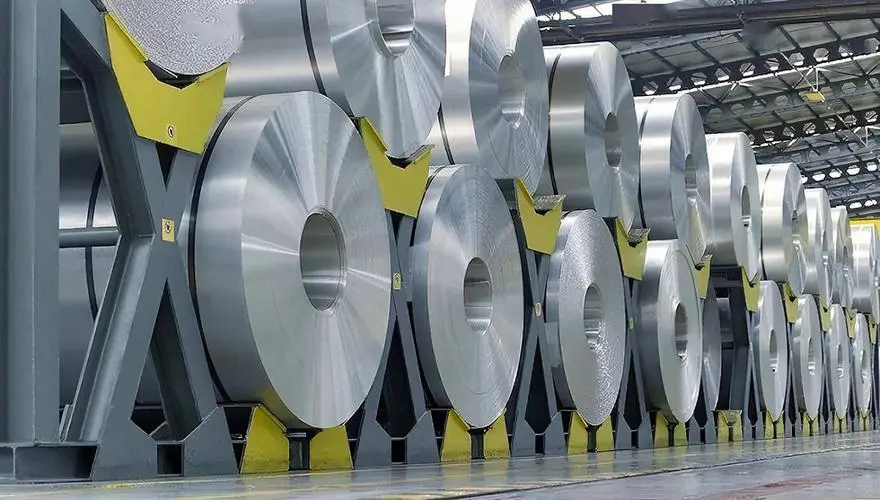国家发展改革委等部门关于印发《电解铝行业节能降碳专项行动计划》的
微塑料在土壤中纵向迁移试验模拟研究
微塑料在土壤中纵向迁移试验模拟研究环境修复网讯:塑料污染是当今全球面临的巨大挑战。其中,微塑料在土壤环境系统和水环境系统中的污染越来越受到人们的重视。微塑料是指直径小于5mm的塑料
环境修复网讯:塑料污染是当今全球面临的巨大挑战。其中,微塑料在土壤环境系统和水环境系统中的污染越来越受到人们的重视。微塑料是指直径小于5mm的塑料,作为一种新兴的环境污染物,微塑料对陆地、海洋和大气环境存在潜在风险,对人体和生物健康也具有潜在毒性。地表土壤是重要的微塑料储存场所,但由于缺乏科学数据,微塑料在土壤中的迁移情况未知。本研究通过微塑料在沙土柱中的渗透迁移模拟实验,探究了不同的环境因素对五种微塑料在土壤中的丰度、分布以及纵向迁移的影响。经12次83mm的模拟降水实验过后,研究观察到,较小尺寸的聚乙烯微塑料(21μm)具有最大的迁移潜力,其最大深度达到了7.5cm;然而,聚丙烯微塑料颗粒的迁移深度只达到1.5 cm,主要的原因是浮力作用的增强可能阻碍了其迁移的潜力。根据进一步实验研究发现,微塑料的迁移深度随着干-湿循环次数的增加而显著增加。经24次干湿循环实验,迁移深度从4.5 cm增加到了7.5cm,两者存在显著线性关系;相比之下,单次施加的降水和表面微塑料浓度对迁移深度的影响较小。基于实验室得到的干-湿循环对微塑料在土壤中垂直迁移性规律,结合中国347个主要城市的天气数据,初步估算了100年的微塑料迁移深度。本研究结果表明土壤可能不仅作为陆地微塑料的主要储存场所,长期而言,也是地下受体(如地下动物或含水层)的可能入口。该研究对掌握微塑料在土壤环境中的迁移规律具有参考意义。
这一学术成果近期发表在环境领域权威期刊Environmental Pollution (IF=5.714), 249, 527-534, 题目为“Microplastics undergo accelerated vertical migration in sand soil due to small size and wet-dry cycles”。该研究由清华大学环境学院联合加拿大阿尔伯塔大学,美国斯坦福大学共同完成。论文通讯作者为清华大学侯德义副教授,第一作者为清华大学David O'Connor博士后和清华大学联合培养硕士生潘仕镇。
以下为五种微塑料在体式显微镜下显示的粒形、碎片形或球形的颗粒。其中,(a)聚乙烯-细颗粒、(b)聚乙烯-粗颗粒、(c)聚丙烯、(d)洗面奶中颗粒和(e)磨砂膏中颗粒。

五种微塑料在体式显微镜下显示颗粒形状
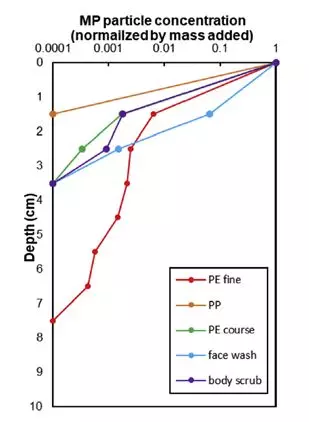
经12次83 mm模拟降水量渗透后,五种微塑料的标准化质量分布
经12次83mm模拟降雨量的土壤柱实验显示,与其他四种微塑料颗粒相比,平均尺寸为21μm的聚乙烯颗粒(PE-fine)是纵向迁移潜力最强的一种,其最大深度达到了7.5 cm。
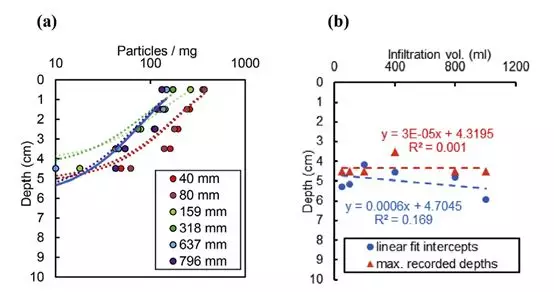
一次渗透的溶液量对微塑料 (PE-fine)迁移的影响 (a)剖面深度分布、(b)微塑料(PE-fine)最大迁移深度与预测最大迁移的线性拟合
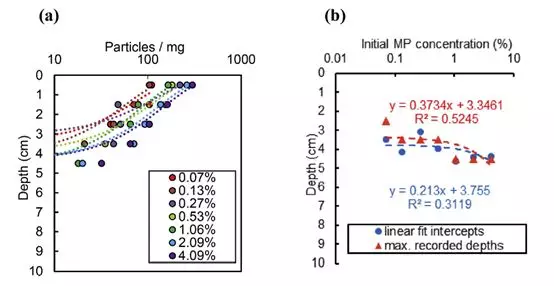
初始微塑料浓度对微塑料(PE-fine)迁移的影响 (a)剖面深度分布、(b)微塑料(PE-fine)最大迁移深度与预测的最大迁移的线性拟合
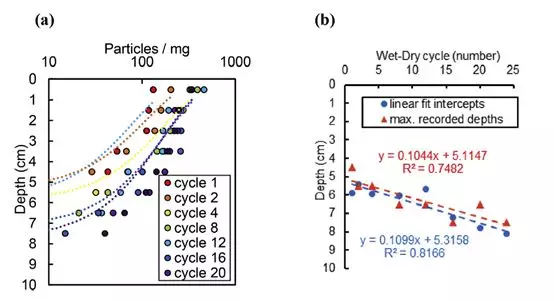
土壤中干-湿循环对微塑料(PE-fine)迁移的影响 (a)剖面深度分布、(b)微塑料(PE-fine)最大迁移深度与预测的最大迁移的线性拟合
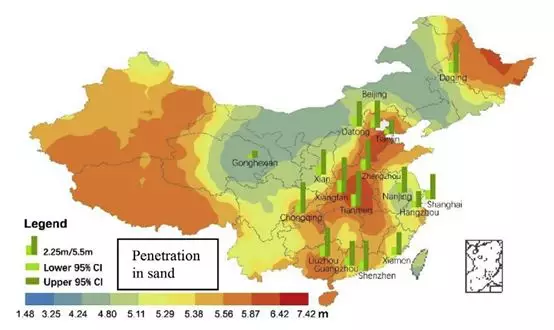
对全国347个主要城市进行沙土环境中100年微塑料潜在的迁移深度预测:北京市 = 5.66 m; 重庆市 = 6.43 m;大庆市 = 6.21 m;大同市 = 5.33 m;共和县 = 1.48 m;广州市 = 5.22 m;杭州市= 3.35 m; 柳州市 = 5.99 m;南京市 = 5.44 m;上海市= 5.33 m; 深圳市 = 6.32 m;天津市= 3.02 m; 天门市 = 7.42 m;厦门市 = 4.78 m;西安市= 5.22 m; 襄樊市 =7.42 m
文章信息
英文标题:
Microplastics undergo accelerated vertical migration in sand soil due to smallsize and wet-dry cycles
英文摘要
Microplastics (MPs) are an emerging concern and potential risk to marine and terrestrial environments. Surface soils are reported to act as a sink. However, MP vertical mobility in the subsurface remains uncertain due to a lack of scientific data. This study focused on MP penetration in sand soil column experiments. Here we report the mobility of five different MPs, which consisted of polyethylene (PE) and polypropylene (PP) particles of various sizes and densities. We observed that the smallest sized PE MPs (21 mm) had the greatest movement potential. Moreover, it was found that when these MPs were subjected to greater numbers of wet-dry cycles, the penetration depth significantly increased, with an apparent linear relationship between depth and wet-dry cycle number (r2=0.817). In comparison, increasing the volume of infiltration liquid or the surface MP concentration had only negligible or weak effects on migration depth (r2=0.169 and 0.312, respectively). based on the observed wet-dry cycle trend, we fore 100-year penetration depths using weather data for 347 cities across China. The average penetration depth was calculated as 5.24 m (95% CI=2.78-7.70 m), withBeijing Municipality and Hebei, Henan and Hubei provinces being the most vulnerable to MP vertical dispersion. Our results suggest that soils may not only represent a sink for MPs, but also a feasible entryway to subsurface receptors, such as subterranean fauna or aquifers. Finally, research gaps are identified and suggested research directions are put forward to garner a better understanding MP vertical migration in soil.
原标题:微塑料在土壤中纵向迁移试验模拟研究
-
面对海洋微塑料污染 我们在行动!2019-06-12
-
我国塑料垃圾和微塑料污染源头控制对策2018-11-11
-
我国海洋微塑料污染处于中低水平2018-06-01
